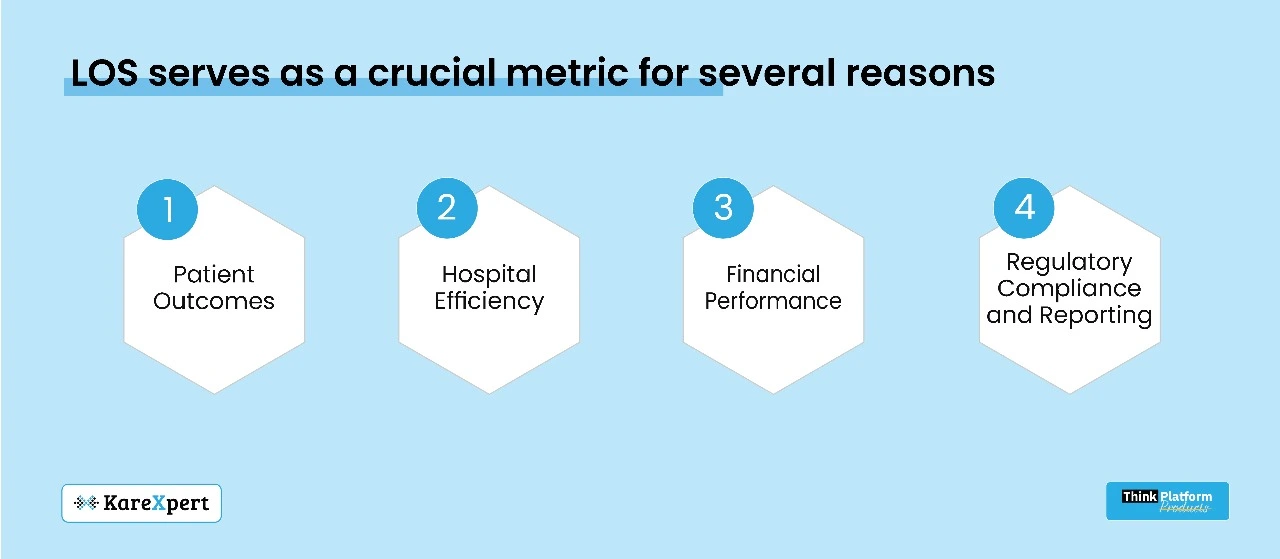The Hotel California Effect: Why Patients Can’t Check Out of Hospitals

In healthcare, the concept of Length of Stay (LOS) is a critical metric that significantly impacts patient care, hospital efficiency, and financial performance. LOS refers to the duration a patient spends in a hospital from admission to discharge. Understanding and optimizing LOS is essential for improving patient outcomes and ensuring the operational efficiency of healthcare facilities. This comprehensive guide will explain how to calculate LOS, its importance, and strategies to optimize it for better healthcare delivery.
What is Length of Stay (LOS)?
Length of Stay (LOS) is defined as the number of days a patient remains hospitalized. It is calculated from the day of admission to the day of discharge. For instance, if a patient is admitted to the hospital on January 1st and discharged on January 7th, their LOS is 7 days. LOS is a key performance indicator (KPI) used by healthcare providers to gauge efficiency and quality of care.
Why is LOS Important in Healthcare?

LOS serves as a crucial metric for several reasons:
1. Patient Outcomes: Shorter LOS can indicate efficient and effective care, while overly lengthy stays might suggest complications or inadequate discharge planning. Striking a balance is essential for optimal patient recovery.
2. Hospital Efficiency: Optimizing LOS helps in better bed management, ensuring that beds are available for incoming patients and reducing overcrowding.
3. Financial Performance: Lengthier hospital stays increase operational costs. By reducing LOS without compromising care, hospitals can improve financial performance and allocate resources more effectively.
4. Regulatory Compliance and Reporting: Accurate LOS data is necessary for meeting regulatory requirements and reporting standards set by healthcare authorities and insurance providers.
How to Calculate LOS
Calculating LOS is straightforward. The formula is:
LOS = Date of Discharge – Date of Admission
However, the calculation can vary based on different settings or cases:
1. Same-Day Discharges: For patients discharged on the same day of admission, LOS is counted as one day.
2. Extended Stays: For patients with multiple transfers within the hospital, total LOS is the sum of all days spent across different units or wards.
3. Outpatient Observation: In cases where patients are under observation without formal admission, the calculation may differ based on facility policies.
Strategies to Optimize LOS
Optimizing LOS involves a combination of clinical excellence, efficient processes, and advanced technology. Here are key strategies to consider:
1. Enhanced Care Coordination
Effective coordination among healthcare providers, including doctors, nurses, and allied health professionals, ensures that patients receive timely and appropriate care.
– Multidisciplinary Rounds: Regular interdisciplinary team meetings to discuss patient care plans can help identify and address issues proactively.
– Care Pathways: Standardizing care protocols based on best practices can streamline treatment and discharge processes.
2. Early Discharge Planning
Initiating discharge planning at the time of admission helps set clear expectations and prepares patients and their families for a smooth transition from hospital to home.
– Patient Education: Educating patients about their conditions, treatment plans, and post-discharge care requirements reduces misunderstandings and readmissions.
– Follow-Up Appointments: Scheduling follow-up visits before discharge ensures continuity of care and timely intervention if issues arise.
3. Use of Technology and Data Analytics
Leveraging technology and data analytics facilitates better patient management and decision-making.
– Electronic Health Records (EHR): EHR systems provide real-time access to patient data, allowing for quick adjustments to care plans and efficient documentation.
– Predictive Analytics: Analyzing historical data to predict LOS for specific conditions helps in resource allocation and identifying potential delays.
4. Strengthening Transitional Care
Providing robust transitional care services ensures that patients receive adequate support after discharge, reducing the likelihood of readmissions.
– Home Healthcare Services: Coordinating home healthcare services for patients who need ongoing medical support post-discharge can shorten hospital stays.
– Telehealth: Utilizing telehealth for follow-up consultations and monitoring can ensure patient compliance with treatment plans and early detection of complications.
5. Optimizing Surgical Procedures
Streamlining surgical workflows and ensuring efficient pre- and post-operative care can significantly reduce LOS for surgical patients.
– Preoperative Assessments: Conducting thorough preoperative assessments minimizes the risk of complications and delays.
– Postoperative Care Protocols: Implementing standardized postoperative care protocols ensures timely recovery and discharge.
6. Addressing Social Determinants of Health
Social determinants such as housing, transportation, and socio-economic status can impact LOS. Addressing these factors through comprehensive discharge planning and community resources can reduce unnecessary extended stays.
– Social Work Services: Integrating social work services into discharge planning to address non-medical barriers to timely discharge.
– Community Partnerships: Collaborating with community organizations to provide resources and support for patients post-discharge.
7. Continuous Monitoring and Improvement
Regularly monitoring LOS data and identifying trends helps in implementing targeted interventions and continuous improvement.
– Dashboards and Reports: Using dashboards to monitor LOS metrics and generate reports for analysis and decision-making.
– Feedback Mechanisms: Gathering feedback from healthcare providers and patients to identify areas for improvement.
Conclusion
Length of Stay (LOS) is a pivotal metric in healthcare that influences patient outcomes, hospital efficiency, and financial performance. By understanding how to calculate LOS and implementing strategies to optimize it, healthcare providers can enhance the quality of care and operational efficiency. KareXpert’s advanced healthcare solutions support these efforts by providing comprehensive tools for care coordination, predictive analytics, and efficient discharge planning. Embracing these strategies can lead to better patient experiences, improved health outcomes, and a more sustainable healthcare system.
Ready to optimize Length of Stay (LOS) in your healthcare facility? Explore how advanced solutions can help streamline operations and improve patient care. Contact us today to learn more and schedule a demo.
